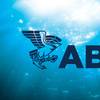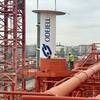News: Slow Speed Savings
By John Hatley PE
Workboat operators face a tough time holding onto decent margins while caught in a squeeze between escalating operating costs and slumping day charter rates. How can you lessen the grip between today's rising costs and the battered charter market? Consider the benefit of slightly reduced boat speeds to capture big fuel savings.
A vessel's fuel consumption is directly related to propulsion efficiency and hull resistance. Hull resistance is comprised of four factors; they are frictional, wave making, eddy, and air resistance. Other practical considerations also have considerable impact such as hull paint condition; sea state, currents, plus vessel loading and trim. Slower vessel speeds work to reduce fuel consumed because of a fundamental engineering principal that designers call the "Propeller Cubic Law." We don't need to say much about it here except that slight decreases in vessel speed lead to significant reductions in required propulsion power. This reduction in horsepower directly translates into significantly lower fuel burn.
Typical savings. A workboat takes an outbound 200 nautical mile route and historically burns 171 gallons per hour at a speed of 13 knots. Total fuel burnout is about 2631 gallons during this 15.4-hour transit leg. What's the benefit of a slight speed reduction? Your boat could save nearly 11.6% in fuel (307 gallons) by slowing down only 6% to 12.2 knots on this leg. The penalty? A mere 1-hour added to your voyage leg time (6.4%).
This is a very little time penalty to achieve dramatic fuel savings. Remember these savings mean you've gained much more if viewed as the amount you need in earned revenue to pay for fuel. If your vessel makes 100 round trips a year, the fuel savings could amount to well over 60,000 gallons per boat. This may not immediately apply to certain boats as others may pay for fuel under a charter agreement. Ask these customer's if they value your operation because you intend to save them tens of thousands of gallons of fuel per boat each year on this run. This ought to get your customer's attention and bring added interest that improves the charter employment outlook for your vessels.
You have to balance other things when considering slow steaming such as timely delivery of goods to your customer. However slow steaming can save substantial fuel dollars, ease the strain on your propulsion equipment, and only slightly add voyage travel time. The attached chart gives you a handy way to measure what percentage of fuel savings are available to operators wanting to take advantage of slower speeds.
John Hatley PE, is a Business Manager with GE Marine & Stationary Power. He can be reached at 206-605-0604. GE Marine & Stationary Power's diesel family of medium speed engines offers power ranges between 1193 kilowatts (kW)/1600 brake horsepower (bhp) to 3057 kW/4100 bhp for continuous operation, and 1312 kW/1760 bhp to 3356 kW/4500 bhp for maximum power in 8, 12 and 16 cylinder V configurations. With more than 15,000 engines operating worldwide -- working in some of the most challenging industrial environments -- GE Engines are dependable, long lasting, durable and efficient. These high compression EFI engines deliver reduced fuel consumption, improved reliability and decreased emissions, and are driven by GE's new Powerstar Controller. The GE Competitive parts and engine portfolio includes components for both the 645 and 710 engines, with enhanced features for increased product life, reliability and performance. GE can also provide GE Competitive EMD* diesel engines rebuilt to customer specifications with any combination of new and remanufactured components.








